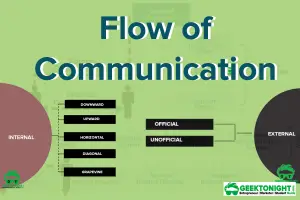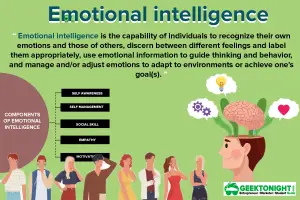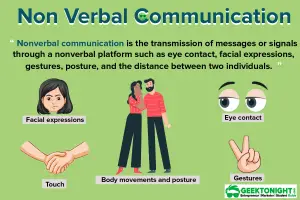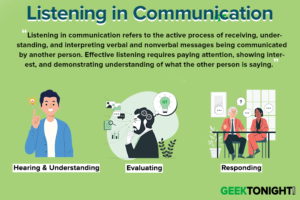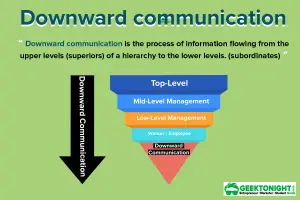Communication can happen at any level within an organisation. Such communication takes place through various channels. A communication channel can be defined as a medium through which a message is sent to its intended receiver.
Team interactions, conferences, meetings or one-to-one interactions with managers/supervisors, issuing instructions to employees, performance management planning and review, interviews, presentations, conference calls, etc., are some channels of communication in an organisation.
Table of Content
Channels of Communication
Some of the formal and informal channels of communication are discussed as follows:
- Business correspondence
- Report
- Circular
- Business letter
- Quotation letter
- Recovery letter
- Informal letter
- Business meeting
- Notice
- Agenda
- Memo
- Video conferencing
Business correspondence
The exchange of information through letters is called correspondence. The correspondence for the purpose of business activities is called business correspondence. It is a formal, written communication between organisations, within an organisation, or between an organisation and its customers.
Examples of business correspondence include business enquiry letters, order letters to suppliers, complaint letters and job application letters.
Some common types of business correspondence are:
- Internal correspondence: Any exchange of letters between individuals and departments within an organisation is called internal correspondence. For example, a letter from the CEO desk to all employees is an internal correspondence. The appointment letter issued by the HR department to hire a person in the product design team is another example of internal correspondence.
- External correspondence: Any business correspondence outside an organisation is called external correspondence. Examples include the exchange of letters between an organisation and clients, customers, suppliers, banks, government departments, etc.
- Routine correspondence: Any correspondence on predictable business matters is called routine correspondence. Examples include inquiry letters, order letters, replies, acknowledgements, invitation letters, and appointment letters.
- Sales correspondence: Any correspondence associated with the sales of a business is called sales correspondence. Examples include sales letters, sales reports, invoices, order confirmation, delivery letters, and account statements.
Report
A report is a brief, precise document. It is written for a specific audience with some specific objective. Reports present facts and information based on which crucial decisions are made in an organisation.
Therefore, a person writing a report must take care of all essential attributes during report writing. A report can be oral or written. However, a written report is more formal than an oral report.
Circular
A circular is referred to a letter containing some key information that is distributed to a large number of people in an organisation. Examples of circulars include tender notices, change of address, the opening of a new branch, or the introduction of a new product.
Business letter
A business letter refers to a letter written by one organisation to another organisation or letters drafted for customers, clients or other external agencies. The overall style of letter depends on the relationship between the parties concerned. A business letter is used for authorised and skilled communication. It is not just a random mail; rather, it has a specific, clear objective(s).
Quotation letter
A quotation letter is drafted by an organisation in response to an enquiry from a potential buyer. In this letter, an organisation provides a customer with the required information about a product or service, such as model, quality, price, mode of payment, discounts, offers, mode of transportation, etc.
Recovery letter
A recovery letter is a letter written by a seller to a buyer to recover or collect the pending amount for the goods or services provided. The seller must also clearly mention the amount of outstanding payment and the last date of payment of this amount. The letter should conclude with a firm but a polite note on the legal action that a seller could take in the event of fur- ther non-payment of dues.
Informal letter
A person may need to write personal letters to friends or relatives or even colleagues. These letters are called in-formal or friendly letters. An informal letter is a way of communicating with your close and dear ones. Informal letters are mostly written in the following situations:
- To convey a personal message or news
- To give an advice
- To congratulate someone
- To communicate with friends, relatives, etc.
- To write love notes
Business meeting
A business meeting is an occasion or event where participants come together to discuss or decide on something related an organisation’s operations or functions. In a business meeting, a discussion is also done on a specified problem, issue or premediated topic.
Business meetings are more useful than other communication tools, such as e-mail, chat, or SharePoint. A business meeting can be successful if it has a clear agenda and the agreed points are properly documented and circulated as ‘Minutes of the Meeting (MOM)’ to all participants and stakeholders.
Notice
A notice of a meeting is a formal communication sent to all the people who must attend the meeting. A notice can also be a formal announcement of an occasion, issuance of some guidelines or appeals. Basically, it is formally used to announce an upcoming event.
Agenda
An agenda consists of a list of points that are to be considered and discussed in a meeting. An agenda should be prepared in advance before setting up a meeting and distributed at least one day before the meeting so that the participants are able to prepare accordingly.
E-mails are preferred for internal communication and external communication because they automatically keep records of communication, which can be accessed anytime. For instance, E-mails can be used to document commitments made to clients.
E-mail channel of communication holds an edge over other forms of communication and is the preferred mode of written communication by organisations around the world.
Memo
A memo is the short form of memorandum, which refers to a written message circulated in an organisation. It is one of the most extensively used means of official communication in the business world. Its key purpose is to serve as a reminder or to provide some instructions.
Memos can be used to convey information, provide a response to a question, offer suggestions, present an informal report, document a reference for future use, etc.
Video conferencing
Video conferencing is a channel of communication where two or more people can visually connect and communicate with each other. Video conferencing has empowered organisations to hold meetings face-to-face with clients or customers without being physically present at a particular location.
It is a pervasive and powerful tool to perform presentations, conferences and present audio-video contents to be live-streamed and is accessible globally. It saves time as well as money involved in traveling as people can get acccess of video conferencing anywhere with the help of Internet.
Business Communication Notes
(Click on Topic to Read)
- What is Business Communication?
- What is Communication?
- Types of Communication
- 7 C of Communication
- Barriers To Business Communication
- Oral Communication
- Types Of Non Verbal Communication
- What is Written Communication?
- What are Soft Skills?
- Interpersonal vs Intrapersonal communication
- Barriers to Communication
- Importance of Communication Skills
- Listening in Communication
- Causes of Miscommunication
- What is Johari Window?
- What is Presentation?
- Communication Styles
- Channels of Communication
- Hofstede’s Dimensions of Cultural Differences and Benett’s Stages of Intercultural Sensitivity
- Organisational Communication
- Horizontal Communication
- Grapevine Communication
- Downward Communication
- Verbal Communication Skills
- Upward Communication
- Flow of Communication
- What is Emotional Intelligence?
- What is Public Speaking?
- Upward vs Downward Communication
- Internal vs External Communication
- What is Group Discussion?
- What is Interview?
- What is Negotiation?
- What is Digital Communication?
- What is Letter Writing?
- Resume and Covering Letter
- What is Report Writing?
- What is Business Meeting?
- What is Public Relations?
Business Communication Notes
(Click on Topic to Read)
- What is Business Communication?
- What is Communication?
- Types of Communication
- 7 C of Communication
- Barriers To Business Communication
- Oral Communication
- Types Of Non Verbal Communication
- What is Written Communication?
- What are Soft Skills?
- Interpersonal vs Intrapersonal communication
- Barriers to Communication
- Importance of Communication Skills
- Listening in Communication
- Causes of Miscommunication
- What is Johari Window?
- What is Presentation?
- Communication Styles
- Channels of Communication
- Hofstede’s Dimensions of Cultural Differences and Benett’s Stages of Intercultural Sensitivity
- Organisational Communication
- Horizontal Communication
- Grapevine Communication
- Downward Communication
- Verbal Communication Skills
- Upward Communication
- Flow of Communication
- What is Emotional Intelligence?
- What is Public Speaking?
- Upward vs Downward Communication
- Internal vs External Communication
- What is Group Discussion?
- What is Interview?
- What is Negotiation?
- What is Digital Communication?
- What is Letter Writing?
- Resume and Covering Letter
- What is Report Writing?
- What is Business Meeting?
- What is Public Relations?


